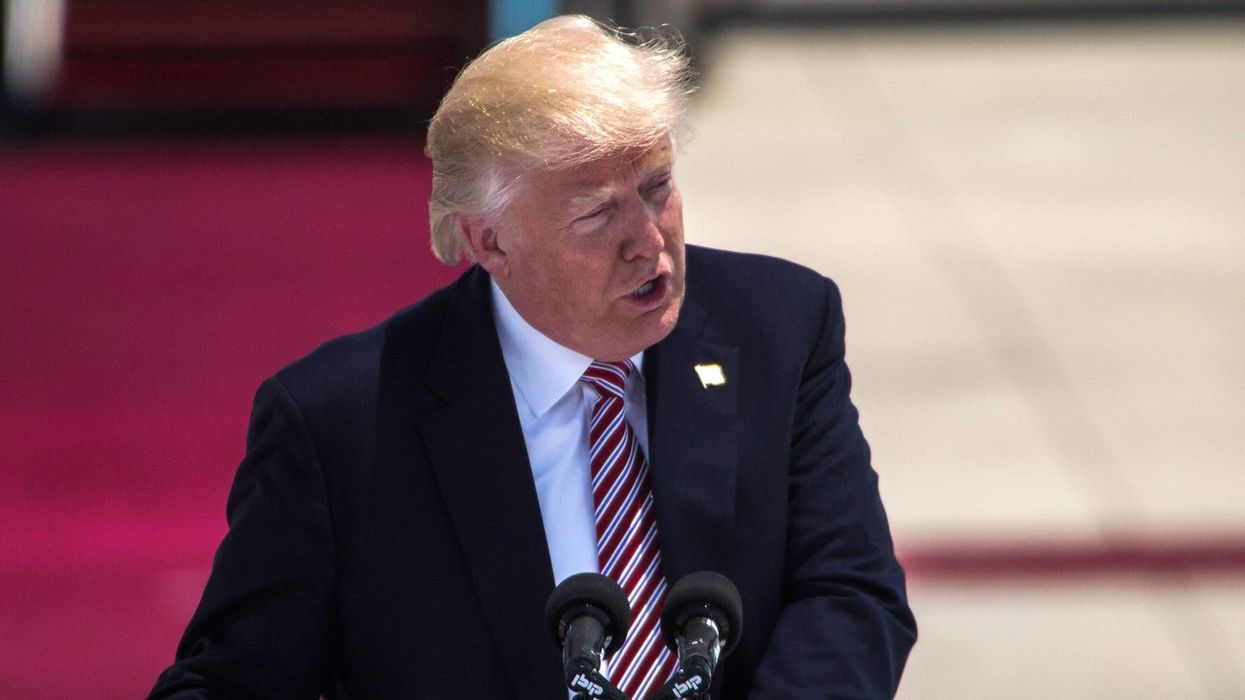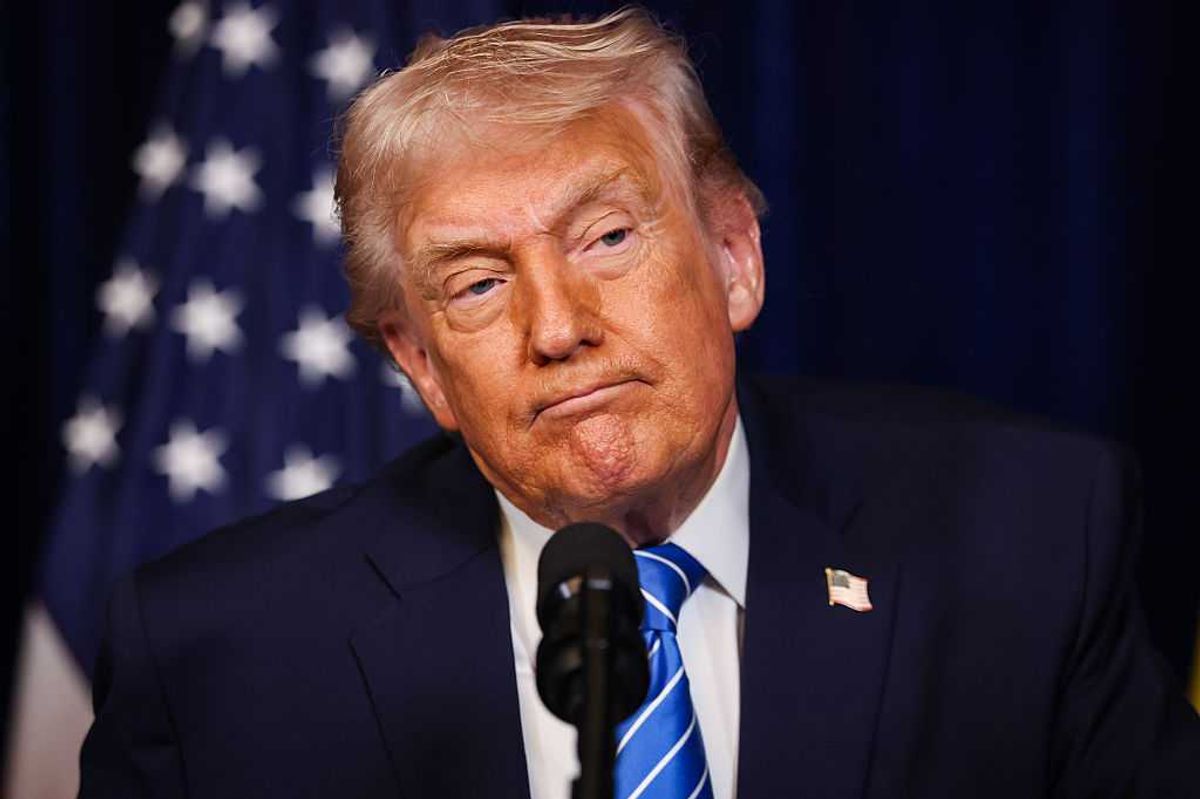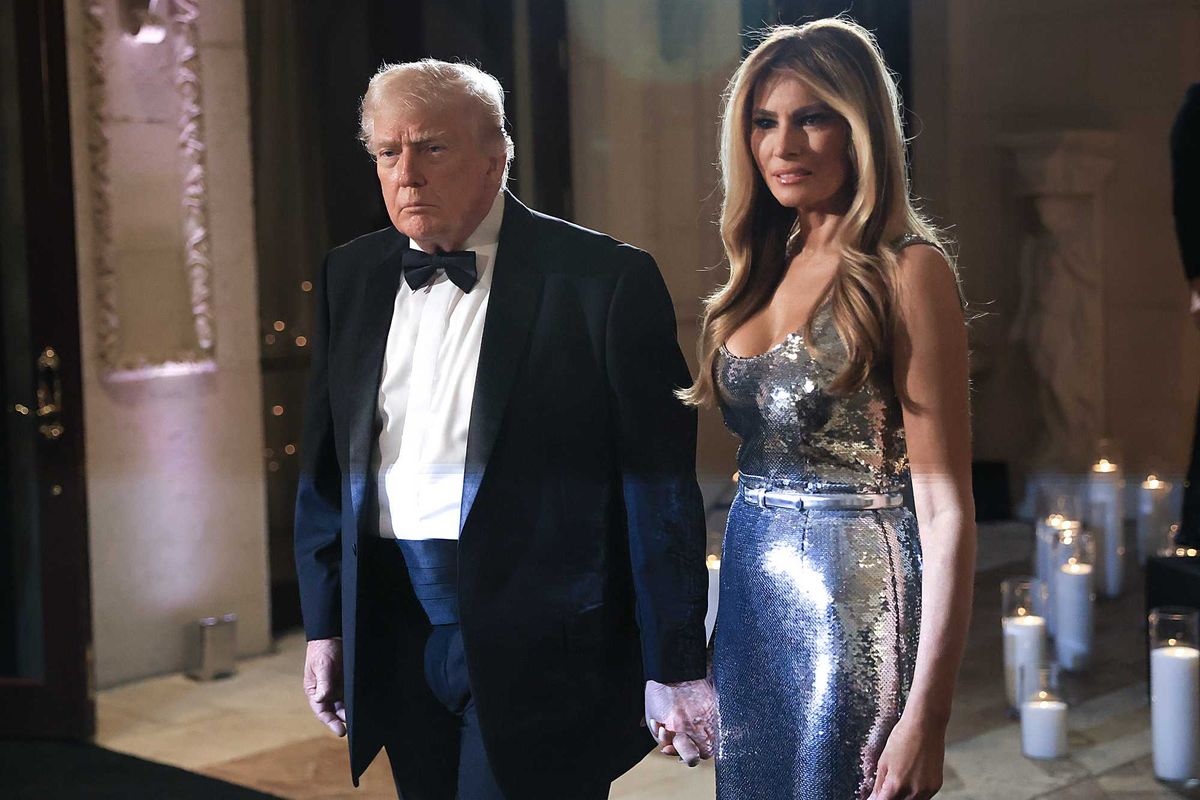News
Max Ehrenfreund
May 24, 2017

Picture:
Ilia Yefimovich/Getty Images
White House officials are boasting that President Trump's budget would balance federal finances in 10 years. Yet despite extreme reductions in spending on health care for the poor, food stamps, education, science and other basic government programs, Trump's staff could only balance the budget by claiming vague savings and unspecified sources of new revenue — in other words, with trillions of dollars in mystery money.
It is not just that Trump is counting on a rapid acceleration in economic growth that economists believe is unlikely, which the budget projects will yield $2.1 trillion in new revenue ($2,062,000,000,000, to be more exact). Besides that bonus from growth, the budget also assumes that Trump's tax cuts — which he has said will be the largest in history — would not affect the government's bottom line at all.
And even with optimistic assumptions about the tax code specifically and the overall economy more broadly, the White House still needed to claim over $1 trillion in unidentified cuts to miscellaneous programs to balance the budget.
Presidents often include optimistic assumptions in their budgets, but not to this degree, said Marc Goldwein, policy director at the nonpartisan Committee for a Responsible Federal Budget (CRFB). “I do think this is on a whole new level, based on what we’ve seen before,” he said.
“This is on the outer limits,” said Bill Hoagland, a veteran GOP congressional aide. “It is pushing the envelope.”
Let's take a closer look at how the White House says it would balance the budget.
“Twopenny plan”: $1.4 trillion
Trump has pledged not to reduce spending on Medicare or Social Security and to increase the budget for the Pentagon. Collectively, those categories account for over half of total federal outlays. The goal of balancing the budget in 10 years implies severe reductions in all of the rest of public spending.
In particular, Trump proposes reducing all nondefense, discretionary spending — a miscellaneous category that includes a variety of basic government services, including education, scientific research, highways, the State Department and the Federal Bureau of Investigation — by about 2 percent annually.
That might not seem like very much, but the reductions add up quickly, especially because inflation and the fact that the population is growing mean that these programs' costs typically increase each year under ordinary circumstances. Over 10 years, Trump's so-called “twopenny plan” adds up to a 27 percent reduction across the board.
Hoagland, who is now a senior vice president at the Bipartisan Policy Center, is troubled not only by the size of these cuts, but also by the fact that Trump and his aides did not explain where the savings would come from in that broad category. On some nondefense, discretionary priorities — such as infrastructure and border security — Trump has said he will increase spending, so it is unclear how the president would achieve that annual goal of 2 percent reductions.
Office of Management and Budget Director Mick Mulvaney listens to President Trump at the White House on March 17. (Jonathan Ernst/Reuters)
“Economic feedback”: $2.1 trillion
The budget also forecasts $2.1 trillion in additional money attributable to a more robust economy. If economic activity picks up, Americans will earn more, buy more and invest more — and that means they'll pay more in taxes as well.
This forecast is based on the assumption in the budget that Trump's policies will accelerate the pace of economic growth to about 3 percent a year, which many economists view as optimistic relative to independent projections.
For instance, President Barack Obama's most optimistic budget, CRFB's Goldwein said, forecast economic growth at about 0.3 percentage points above the projection by the nonpartisan Congressional Budget Office. Trump's first budget puts growth at least a full percentage point above that forecast.
“The growth numbers in this budget are laughable,” said Jason Furman, who served as chairman of the Council of Economic Advisers under Obama. “It's flabbergasting.”
The administration hopes to achieve that goal in part through deregulating industry and through imposing stricter requirements on recipients of public assistance to force them to find employment.
Even conservative experts who spoke with The Washington Post suggested that some of Trump's policies might work against achieving that goal. Hoagland pointed out that extreme reductions in funding for science and education would restrain economic growth over the long term. Technological progress and more skilled labor are crucial for improving standards of living, he said — and the responsibility for making those investments up front has typically fallen to the government.
Others pointed out that Trump's budget reduces spending on the Earned Income Tax Credit and similar programs, which Rep. Paul D. Ryan (R-Wis.), the speaker of the House, and other conservative policymakers have argued are valuable for encouraging Americans who are not working to look for a job. At the same time, economists in both parties argue that Trump's broader opposition toward immigration and free trade could slow down economic activity as well.
What is more, this $2.1 trillion apparently does not include any gains from changes to the tax system, which economists say could be one of the more effective ways for the administration to improve the economy.
“Tax reform”: Unknown
For Trump, generous tax relief was a crucial aspect of his campaign — but details on tax reform are completely omitted from the budget released Tuesday. Instead, the administration simply assumes no fundamental change in taxes.
Mick Mulvaney, Trump's budget director, said that the White House was still planning on reforming the tax system, but that because those plans are preliminary, the administration decided not to assume any overall change in the amount of money collected.
“We don't want to make too many assumptions,” Mulvaney told reporters at the White House Tuesday morning. “We thought that the assumption that the tax reform would be deficit-neutral was the most reasonable.”
It is difficult to know what to make of this statement, because the budget in fact does project a change in the deficit resulting from revenues — an increase of $2.1 trillion over 10 years. Presumably, Mulvaney means that bonus from economic growth is not a result of changes to the tax system, but instead would be a result of the administration's other polices designed to grow the economy.
In other words, above and beyond that $2.1 trillion, the administration is also assuming a further bonus from its tax policy that will cancel out reduced rates. The size of that additional assumption is unknown.
Yet if experts are dubious of the administration's ability to achieve its economic goals apart from taxes, they are even more witheringly skeptical about the idea that Trump's reductions in taxes could somehow pay for themselves. One recent survey of 37 prominent economists found none who believed that a tax cut would not add to the national debt.
Another interpretation is that the Trump administration has given up on the idea of a tax cut and is planning reforms to the tax system that will not change the overall burden of taxes, but could make the system fairer and more efficient. Experts on both sides of the aisle would welcome that approach, but it would be an abrupt departure from recent statements in favor of a cut by White House officials — including Trump himself.
“They’re trying to have it both ways,” Goldwein said.
Ana Swanson contributed to this report.
Washington Post
Top 100
The Conversation (0)













